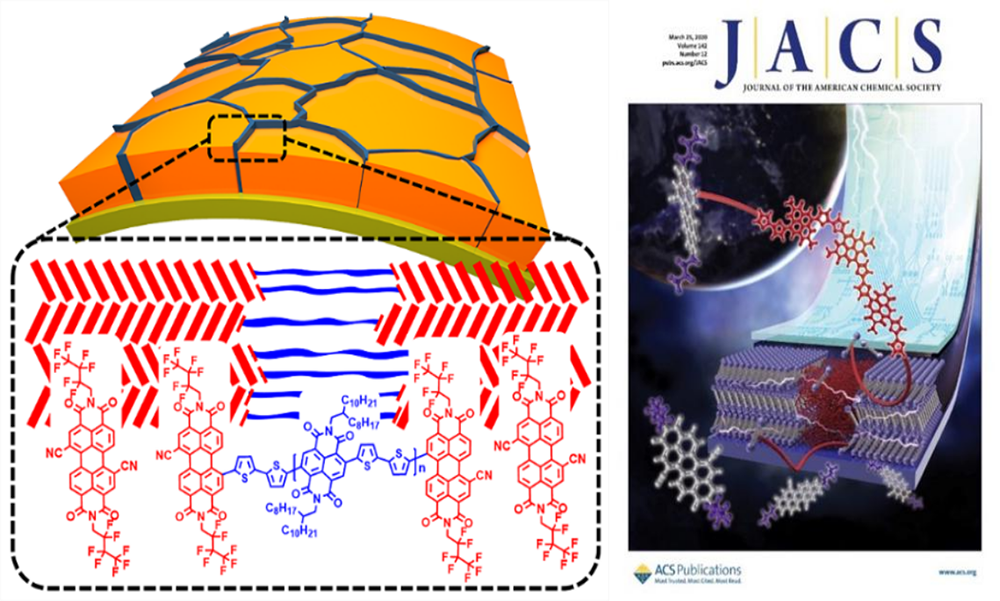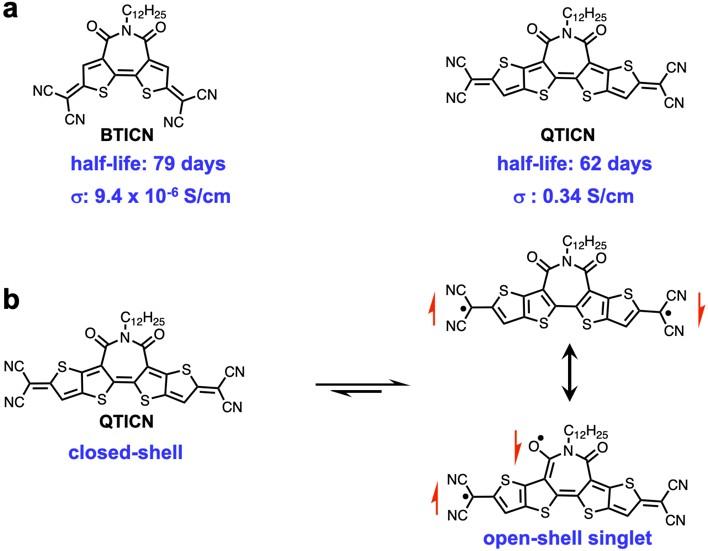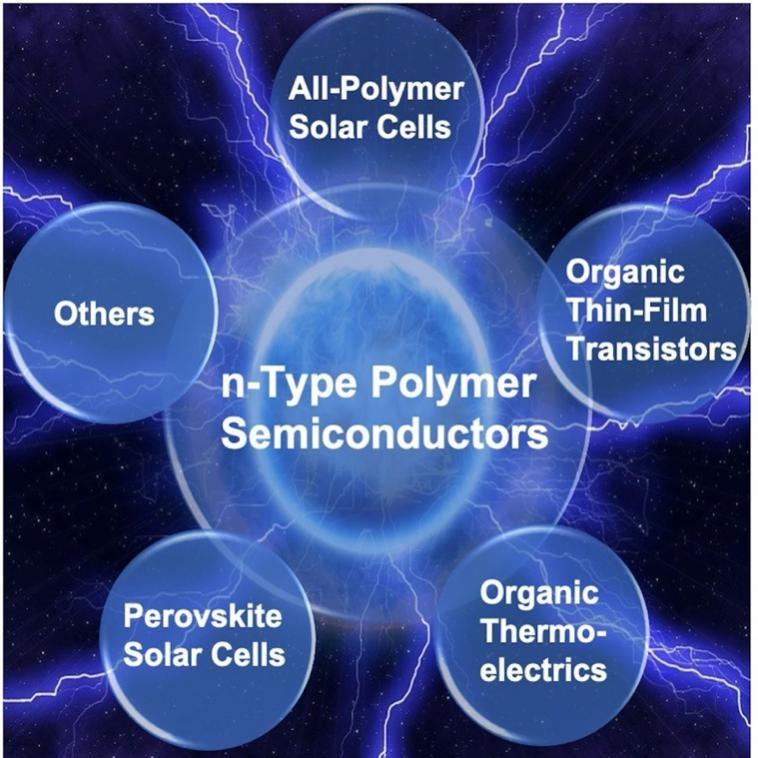New progress in n-type organic semiconductors (OSCs) could lead to cheaper, more flexible, and more efficient electronic devices that will benefit society for years to come. Researchers at Southern University of Science and Technology (SUSTech) have published a series of papers that could pave the path for a series of new commercial applications of OSCs.
The research team, led by Professor Xugang Guo in the Department of Materials Science and Engineering has had papers published in a series of high-impact academic journals, including Journal of the American Chemical Society (IF = 14.695), Angewandte Chemie International Edition (IF = 11.994), Advanced Materials (IF = 25.809), and Chem (IF = 18.205).
Organic semiconductors have attracted much attention from both industry and academia, which can enable the next-generation flexible and printable electronic devices. High-performance n-type organic semiconductors capable of transporting electrons are vital components for various organic optoelectronic devices. In comparison to the p-type analogs, much less n-type OSCs have been reported due to challenges in synthesizing them. They also tend to be less stable, and transport charge carriers (electrons) less efficiently. The development of high-performance n-type organic semiconductors has been an enormous challenge for researchers across the globe.
The first paper published in the Journal of the American Chemical Society (JACS) was titled, “Engineering Intrinsic Flexibility in Polycrystalline Molecular Semiconductor Films by Grain Boundary Plasticization.” The researchers conducted a study on the engineering flexibility of polycrystalline small molecular semiconductor films. They proposed a unique grain boundary plasticization strategy and synthesized a flexible n-type polymer semiconductor to utilize it as a polymeric binder. It would connect small molecule crystallites at the grain boundaries to increase the mechanical stability before achieving highly flexible organic thin-film transistors (Figure 1).

Figure 1. Working principle diagram of increasing mechanical property of n-type polycrystalline small molecular thin-film transistors using novel n-type polymeric binder.
The polymeric binder effectively suppresses polymer-small molecule phase separation while localizing primarily in the small molecular grain boundaries and plasticizing them. Mechanical stress is effectively released due to the unique design strategy, resulting in highly stable and flexible organic thin-film transistors.
The other paper published in JACS was titled, “Stable Organic Diradicals Based on Fused Quinoidal Oligothiophene Imides with High Electrical Conductivity.” The researchers achieved an essential advance in the development of diradical compounds, which are usually considered highly unstable. The stability of the diradical compounds reported in this work is much improved, enabled by the imide-bridged fused molecular frameworks.

Figure 2. (a) Chemical structure of the two quinoidal oligothiophene imides-based organic diradicaloids BTICN and QTICN with fused molecular frameworks; (b) closed-shell and two open-shell diradical canonical forms A and B (due to cross-conjugation) proposed for QTICN.
The unique structures (Figure 2) gave them a high diradical index, a deeply-aligned LUMO level, a half-life of over two months, as well as a highly self-doped and air-stable electrical conductivity. Both diradicaloids were used as dopant-free n-type thermoelectric materials with a conductivity of up to 0.34 S/cm and a power factor reaching 1.52 mW/mK2. The results pave the way for developing stable diradicaloids and high-performance doping-free n-type conductive organic materials.
The paper published in Angewandte Chemie International Edition (Angew. Chem. Int. Ed.) was titled, “Distannylated Bithiophene Imide: Enabling High‐Performance n‐Type Polymer Semiconductors with an Acceptor‐Acceptor Backbone.” The researchers reported their recent progress on the imide-functionalized n-type polymer semiconductors with an acceptor-acceptor (A-A) backbone configuration.

Figure 3. (a) Synthesis of distannylated monomer BTI-Tin and BTI-based acceptor-acceptor type homopolymer PBTI and copolymer P(BTI-BTI2); (b) Synthesis of homopolymers PBTI* and PBTI2* from dibrominated monomers BTI-Br and BTI2-Br, which are used for comparison.
A distannylated electron-deficient bithiophene imide (BTI-Tin) monomer was synthesized in high purity (Figure 3), which had reduced steric hindrance and showed high reactivity in the subsequent polymerizations. The Stille coupling of BTI-Tin with BTI-Br yields polymer PBTI with a much higher molecular weight (Mn), compared to the polymer PBTI* synthesized from dibrominated monomer BTI-Br. BTI-Tin provides ready access to A-A type alternating copolymers, which are not easily accessible from the typical dibrominated monomers.
The results showed that A-A type homopolymers with high Mns could achieve remarkable device performances in organic thin-film transistors (OTFTs) and all-polymer solar cells (all-PSCs). The synthesis of BTI-Tin could enrich the n-type polymer structures, especially for the A-A type copolymers.
The paper published in Advanced Materials was titled “High‐Performance All‐Polymer Solar Cells Enabled by n‐Type Polymers with an Ultranarrow Bandgap Down to 1.28 eV.” In the paper, the researchers developed high-performance all-polymer solar cells (all-PSCs). All-PSCs have several distinct advantages over other types of organic solar cells, including superior mechanical robustness and improved device stability. However, they suffer from low power conversion efficiency, which hence limits their application.

Figure 4. The chemical structure, J–V curves, and EQE spectra of all-PSCs based on DCNBT-TPIC as the acceptor polymer.
The team invented two n-type semiconductors (DCNBT-TPC and DCNBT-TPIC) based on a strong electron-acceptor unit 5,6-dicyano-2,1,3-benzothiadiazole (DCNBT) (Figure 4). DCNBT-TPC and DCNBT-TPIC achieved ultra-narrow bandgaps of 1.38 and 1.28 eV, respectively, with strong and broad absorption in the long-wavelength region, which broke the long-standing bottleneck limiting the device performance of all-PSCs. When applied in all-PSCs, DCNBT-TPIC yielded a remarkable power conversion efficiency (10.2%) with the photoresponse reaching 950 nm. These results demonstrate that the cyano functional group can be used to construct high-performance polymer acceptor materials with narrow bandgaps for advancing the field of all-PSCs.

Figure 5. The application of n-type polymer semiconductors in various organic electronic devices.
The pioneering works of Prof. Xugang Guo on n-type organic and polymeric semiconductors have been well recognized by his peers around the world. It includes all this work from the first naphthalene diimide (NDI)-based polymer to the recently developed ladder-type bithiophene imide-based polymers. He and his research team were invited to write a Perspective article about n-polymer semiconductors (Figure 5). The paper was published in the high-impact academic journal Chem from the Cell Press journal series, entitled “High-Performance n-Type Polymer Semiconductors: Applications, Recent Development, and Challenges.” The Perspective article summarizes the significant material progress, device applications, and challenges of n-type polymer semiconductor materials in recent years.






